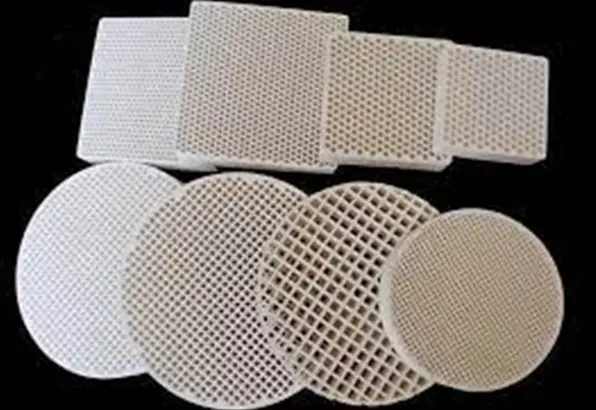cellulose(Especially modified cellulose ethers, such as hydroxypropyl methyl cellulose HPMC, etc.) are not directly used as the core material for insulation in building materials, but indirectly enhance the overall insulation effect by regulating the microstructure, physical properties, and construction stability of the insulation system. Its mechanism of action is mainly reflected in the following three aspects:
1、 Optimize the pore structure of insulation materials to reduce heat conduction
The thermal insulation performance of insulation materials relies on the obstruction of heat conduction by internal enclosed pores (air or inert gas) (the thermal conductivity of air is only 0.026 W/(m · K), much lower than that of solid materials). Cellulose optimizes its pore structure through the following methods:
Regulating the formation and distribution of bubbles/pores
In insulation mortar (such as expanded vitrified microsphere mortar, polystyrene particle mortar) or lightweight concrete, the thickening and water retention properties of cellulose can stabilize the introduction of bubbles during the mixing process:
celluloseThe viscous network formed by molecular chains can wrap around air bubbles, preventing them from merging or escaping, making the pores smaller (with a diameter of 10-100 μ m) and more evenly distributed.
Uniform closure of pores can reduce the thermal bridging effect of solid skeletons (avoiding direct conduction of heat through dense solid particles) and improve the overall thermal insulation of materials (reducing thermal conductivity by 5% to 15%).
Reduce pore damage caused by drying shrinkage
Thermal insulation materials (such as aerated concrete and thermal insulation gypsum) are prone to shrinkage cracks due to moisture loss during the drying process, forming penetrating pores and accelerating heat transfer. The water retention of cellulose can slow down the rate of water evaporation, allowing the material to dry slowly, reducing shrinkage stress, maintaining the integrity of the pore structure, and thus maintaining stable thermal insulation performance.
2、 Improve the construction quality of the insulation layer and avoid thermal bridge defects
The actual insulation effect of the insulation system depends not only on the material itself, but also closely related to the continuity of the insulation layer formed during construction (such as cracks and hollows forming thermal bridges). Cellulose reduces such defects by improving construction performance:
Enhance the water retention of insulation materials to ensure sufficient hydration
For example, in inorganic insulation mortar, cellulose can prolong the retention time of moisture in the mortar (increasing the water retention rate from 60% to over 90%), ensuring that cementitious materials such as cement and gypsum are fully hydrated, forming a complete hardened body, and avoiding problems such as low strength and easy cracking caused by insufficient hydration (cracks can become channels for heat transfer).
Regulate rheology to ensure uniform thickness of insulation layer
celluloseThe thixotropy of the insulation material (becoming thinner when mixed and thicker when left to stand) enables it to be smoothly spread during construction (such as plastering and spraying) while maintaining its shape, avoiding insufficient local thickness caused by flow (forming thin thermal bridges). For example, when plastering the exterior wall insulation, cellulose can maintain the design thickness of the mortar on the vertical surface (such as 20-30mm), ensuring even coverage of the insulation layer.
3、 Improve the adhesion between insulation materials and the base layer, reduce interface heat loss
If there are gaps or peeling at the interface of the insulation system (such as between the insulation layer and the wall base layer, or between the insulation layer and the decorative layer), additional heat loss will occur due to air convection. Cellulose enhances interfacial properties through the following methods:
Enhance the water retention and adhesion of bonding materials
In the bonding mortar between the insulation layer and the base layer (such as tile adhesive, plaster adhesive), the water retention of cellulose can prevent the adhesive from losing water too quickly when it comes into contact with the dry base layer, ensuring that the adhesive has enough time to wet the surface of the base layer and insulation material, enhancing the interfacial bonding strength (usually increasing by 20% to 30%), and reducing the voids caused by poor bonding.
Reduce interface shrinkage cracks
Cellulose reduces the shrinkage stress at the interface by controlling the drying speed of the adhesive, avoiding cracks between the insulation layer and the base layer due to inconsistent shrinkage (cracks introduce air convection, accelerating heat exchange).
summary
Cellulose is a "structural optimization agent" and "construction stabilizer" in insulation building materials. Its core function is to indirectly reduce heat conduction, convection, and bridging effects by regulating pore structure, ensuring construction quality, and strengthening interfacial bonding, thereby assisting in improving the insulation performance of the entire insulation system. It should be noted that its effect needs to be matched with the main insulation materials (such as rock wool, polystyrene board, aerogel), which cannot replace the role of core insulation materials alone.


TEL:+86 (0311) 8444 9786
Email:sales@double-bulls.com
Email:Export@double-bulls.com
Address:No.9 Weisi Road, Jinzhou City Eco-nomic Development Zone, Shijiazhuang City, Hebei Province.

Website

Brochure

Video